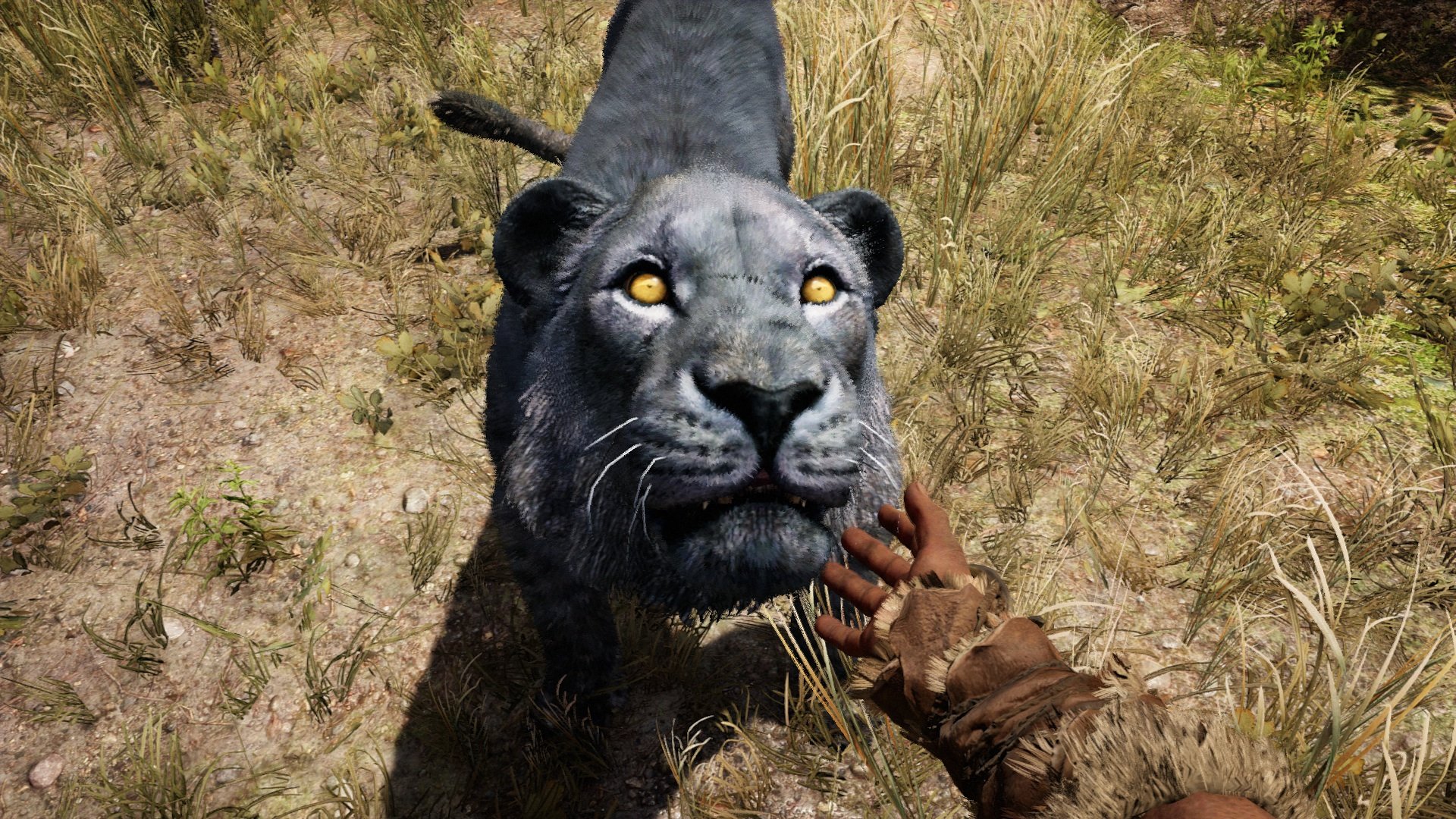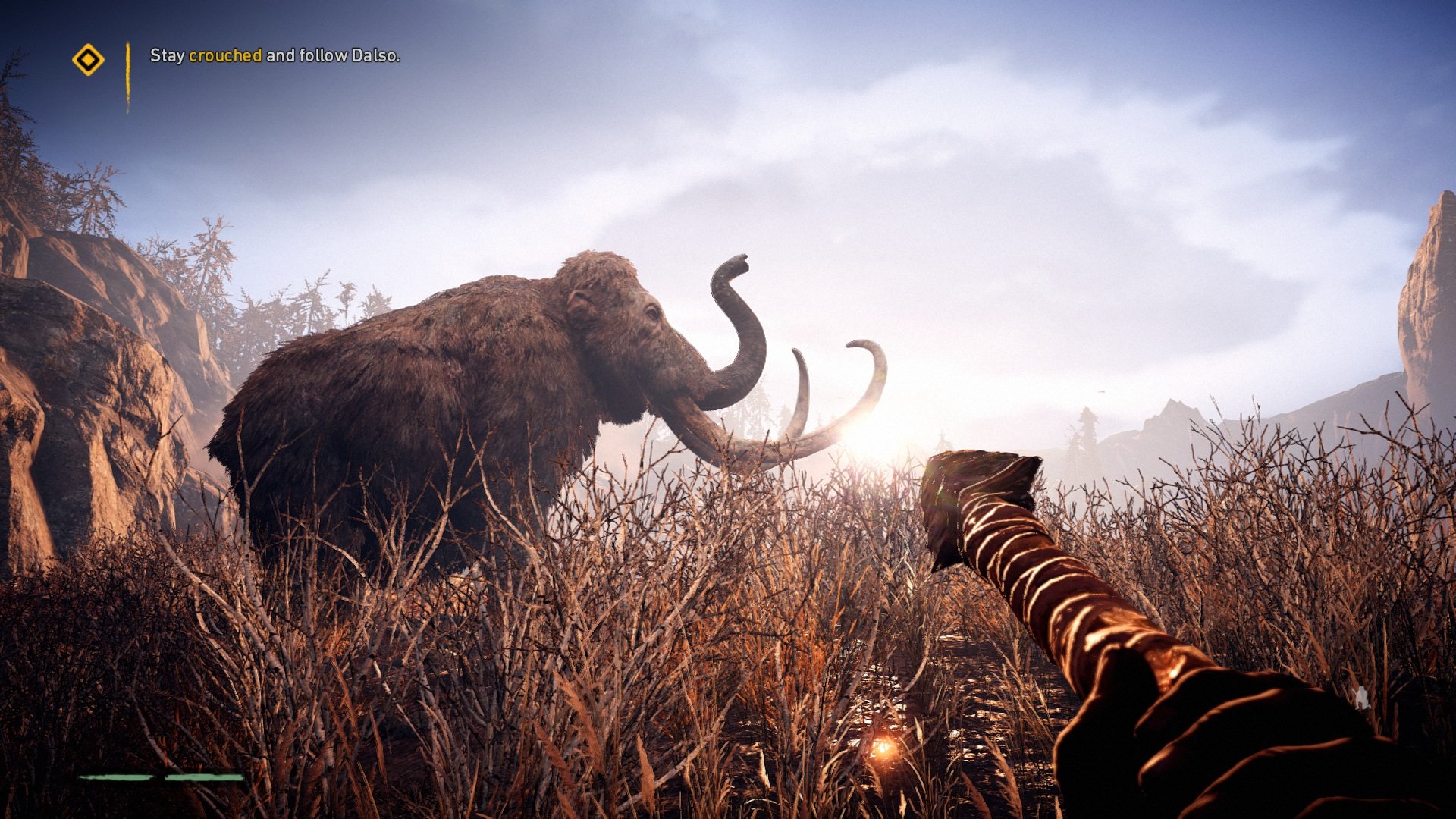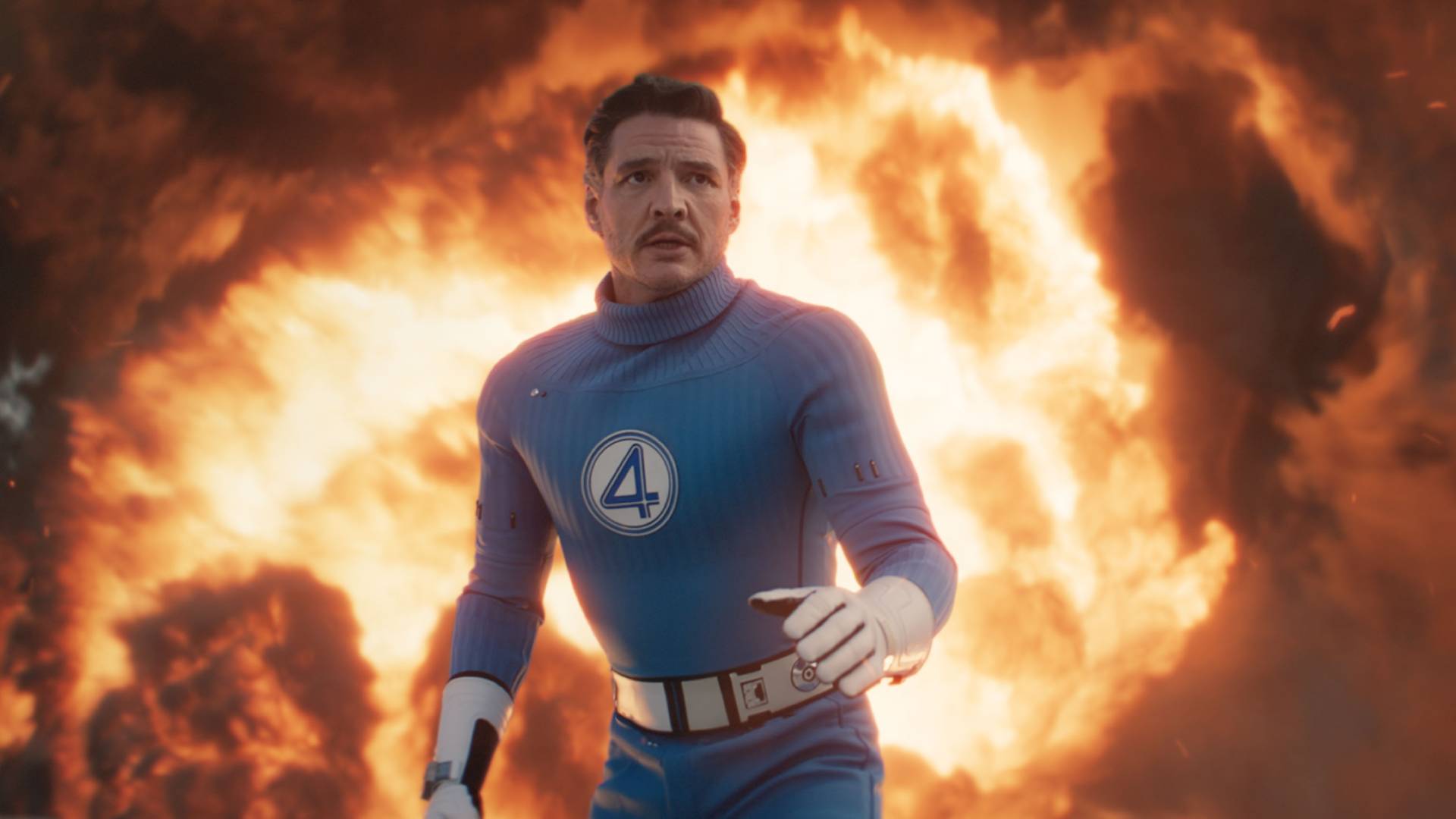Why Ubisoft's open world template is holding its games back
If the spoiler you’re going to reveal is that there’s nothing to spoil, is a spoiler tag truly required? With this pop culture ontology in mind, and the hornet-buzz of anticipation that someone on the internet will get upset no matter what I type here, let’s begin.
Spoilers.
Right, so I’ve offed Ull, leader of the Udam, probably dooming that Neanderthalic tribe to slow death by way of the unspecified brain disease that’s afflicting them. Then there was the Izila, the bunch of woad-drenched, technologically minded interlopers whose leader, Batari, I burned to death in a big pit - almost certainly pegging back human progress in Central Europe a few centuries (you’re welcome, medieval China).
I brought the greatest, goodest and weirdest of the Wenja clan to live in my thriving valley-set village, building a home for these displaced people. I captured members of those rival clans, forcefully assimilating them into our culture, and learning from theirs. I even became the land of Oros’ angriest animal control guy, culling or enslaving the wilderness’ most ferocious beasts on Great Hunts by building traps out of big sticks and scampering away until the AI pathfinding resulted in the beasts jabbing themselves into submission.
I completed every main mission Far Cry Primal had to offer, until the map filter that lists them just flashed back a yawning, empty bird’s-eye view of the world. My reward for doing so? A couple of short cutscenes of my village leaders dancing and, in one scenario, pissing on an old mask. Far Cry Primal never really ends, it just gives you fewer and fewer things to do until you get bored.
I have a few suggestions as to why this is:
1. In the process of development, this stop-gap franchise tugboat was elevated to flagship status when Assassin’s Creed was put on its year-long hiatus, sending developers scrambling to pad out a once small-scale experience for mass release.
2. Such a small number of people actually finish this kind of rangy open-world experience that, statistically speaking, no one does. The devs just kind of forgot.
3. DLC.
4. Someone came into the office and said “Man, I watched No Country For Old Men over the weekend and let me tell you it was great. You know what I liked best? The way it sort of just stopped, giving a haunting insight into the seeming futility of man’s battle against implacable evil. We should totally do that in our game about throwing clubs at goats!”
Weekly digests, tales from the communities you love, and more

Which of these, if any, is actually true doesn’t matter. The result is the same - a game where an actual ending was simply not enough of a priority to squeeze in.
Allow me to pre-emptively rebut your rebuttals: I know that the Hero’s Journey is not the be-all-and-end-all of storytelling, that a game can have no definable ending and still feel complete. I liked Her Story, too - everyone liked Her Story. I also know that a game can have a bad ending and still be considered, overall, excellent - I’m one of those people who bleats about Mass Effect 3 being Pretty Great to the bored whiners who still go on about it. Finally, yes, someone pissing on an old mask is actually a pretty great full stop for a game.
Sadly, Primal doesn’t feel complete; the game is not nearly accomplished enough to get away with a poor ending, and comedy piss is not enough. I’m not sure I’d go so far as to say Primal’s missing ending shows a lack of respect for paying customers, but it is a worrying sign of how its developer’s efficiency measures are beginning to eat themselves.

The now well-established Ubisoft open-world template is about giving players more by taking something away. In return for a flood of games, you just have to accept that lots of those games will be fundamentally similar. In stripping back the need for reinvention, for the kind of mechanical thought that requires project management, intensive testing and tweaks, Ubisoft can release games at relatively screaming pace.
Just look at 2014, which saw releases for Watch Dogs, Far Cry 4, The Crew, Assassin’s Creed: Unity and Assassin’s Creed: Rogue. Five games with entirely different settings, stories, genres, and one where you even play as a car in a world of just cars, but all based around the same set of ideas - wide-open worlds populated with a milling AI biomass and tall things to activate in return for some map. Core design planning for every one of these games was completed almost a decade ago. This is Ford Model T-level work - AAA art on an assembly line.

This probably sounds like more of a criticism than I mean it to. I like this template - climbing cliffs, hitting people and collecting carnivores are practically the only reasons I enjoyed my time with Primal, just like climbing churches, stabbing people and collecting conspiracy theories was why liked Assassin’s Creed 2 - but I can’t help but feel that we’re losing out on newer ideas as a result of how rigidly Ubisoft’s sticking to it.
In Primal, you can almost taste the rejected design choices. It includes the barest hints of indie upstart genre, the survival game - a reliance on crafting for incredibly fragile weapons, a slowly-draining body temperature gauge in snowy regions - but they’re rendered inconsequential by the floods of loot it gives you, letting you upgrade or stockpile your way past problems. There’s a hint of management game about the Wenja village, which grows slowly as you complete tasks - but its sole purpose is to offer more tasks and more loot, letting you simply upgrade it further, a grey, municipal Ouroboros. And that ending? Well, here’s my theory.

The game’s built around protagonist Takkar’s sheer stubbornness to unify his people. He collects together all the greatest minds he can, even allowing rival tribesmen to join if they’ll help the cause. It’s primed perfectly, almost obviously, for all three tribes to put aside their differences and join together to combat some new, effortlessly climactic evil. But what would that have meant, practically speaking? It would have required wholesale switches to the roaming enemy AI, perhaps a previously inaccessible section of map, a glut of design thinking around how to alter the static world you’ve spent so many hours in. In other words, things that the Sacred Template does not really allow for.
It’s not that the ending doesn’t fit, it’s that it’s extra work, and in a system specifically built to reduce the amount of work needed to ship an enormous, chart-conquering game, that’s a problem. Whatever the specific reason for its disappearance - conceptual shifts, lack of care, or DLC plans - it all stems from the Template.

In order to create a game type so compulsive that you won’t want to stop playing it for endlessly released games over literal decades, nothing, not even proper storytelling, can get in the Template’s way. All hail the Template. Pay homage to the Template’s perfect form, but do it exactly as you’re told or you too will be disposed of.
But hey, maybe I’m getting a little over-dramatic. The journey is more important than the destination, after all. In fact, going by web statistics there’s a pretty high probability that the majority of readers have already changed tab in favour of something else, their eye caught by some other high-class content. Maybe endings just don’t matter anymore. I mean, look, I could just finish this right now and no one would be any the



